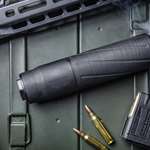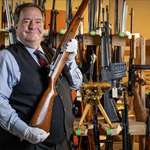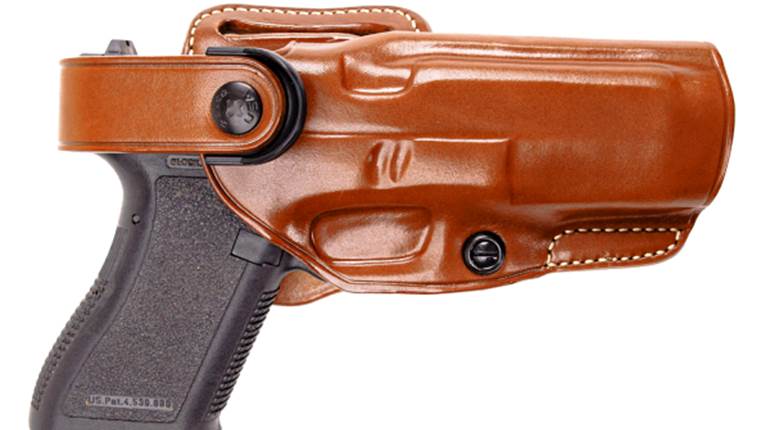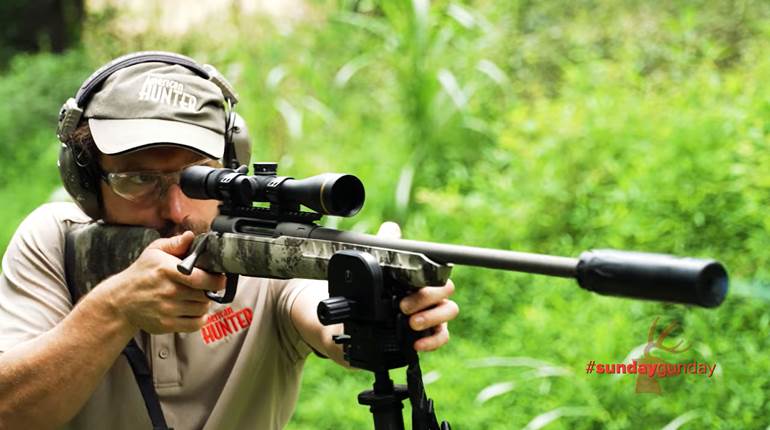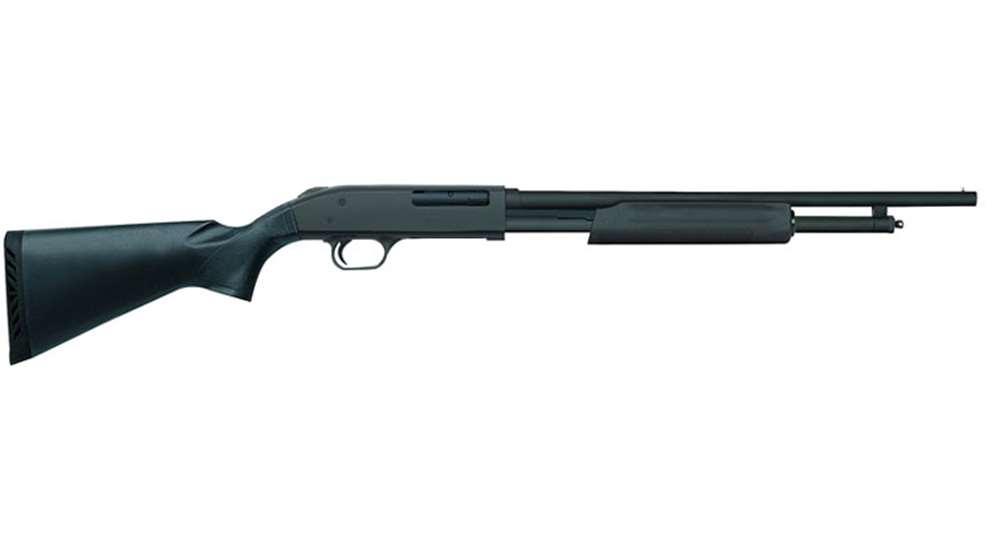
The .410-bore shotgun has long been dismissed as a useful home-protection option when compared to the more potent 12-ga. and 20-ga. defensive shotguns currently on the market. If you had asked me my opinion any time before the mid 2000s, I would have agreed. Nearly all of the available .410 ammunition back then consisted of sporting-purpose birdshot loads, which are not suitable for self defense (more on that later). There was little to choose from in the way of combat-configured .410 shotguns, and the few suitable buckshot loads that were in production weren’t all that easy to find.
But things changed drastically for the .410 ammunition market in 2006 with the launch of one of the most popular .45 Colt/.410 platforms to date: the Taurus Judge revolver. As the popularity of this platform and others like it grew over the next few years, there was a new demand for defense-grade .410 shells suitable for short, rifled handgun barrels.
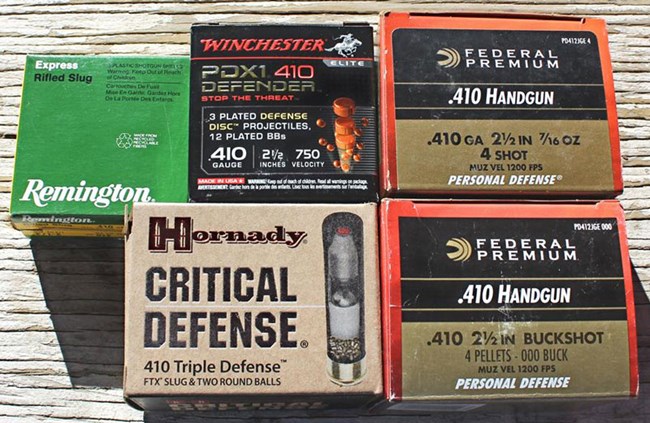
Federal Premium was among the first companies to answer this call with its .410 Handgun line of 2.5" and 3" shells, with options including copper-plated lead shot in #4 birdshot, #4 buckshot and 000 buckshot sizes. Winchester already had Super-X 000 lead buckshot options in place, but went on to expand their line-up to include PDX1 mixed payload options as did Hornady with the Critical Defense Triple Threat. Buckshot and slug loads are now available from a variety of companies including Aguila Ammunition, American Tactical and Remington, to name a few.
What does all this have to do with using .410 shotguns for home defense?
First, purpose-built ammunition can significantly improve the performance of a given platform. A good example of this is the evolution of the 9 mm semi-automatic pistol cartridge. In the 1980s, the 9 mm was perceived as an anemic stopper by law enforcement and civilians alike. When pistols are loaded with 115-gr. full-metal jacket rounds, they are poor stoppers. However, in the three decades since, 9 mm ammunition has evolved significantly. So much so that the pistols chambered for it now dominate law enforcement, military and civilian markets.
Second, my experience has been that firing quality defensive handgun ammunition from long guns can boost that particular load's performance. Again I would reference the 9 mm here. When defense-grade 9 mm hollow points are fired from a pistol-caliber carbine, especially +P loads, they gain a boost in velocity and muzzle energy, making them more effective for close-range defensive situations. The same holds true for other handgun cartridges, including the .45 ACP, 10 mm Auto and .327 Federal Mag.
Therefore, it stands to reason that loading improved defensive handgun .410 shot shells into shotguns would boost the performance of both, making the combination a useful, low-recoil defensive option.
But why take the time to explore defensive .410 shotshells and shotguns when other options are available? Generally speaking, they are the softest shooting shotguns available and usually weigh less than comparable 20-ga. and 12-ga. models. This makes them a better fit for small-frame and recoil-sensitive shooters. A .410 may be the only gun you own, or it will be the only gun at hand in certain situations, such as camping or hiking. For those who own .45 Colt/.410 handguns, a defensive .410 shotgun can be fed out of the same boxes of ammunition in order to simplify a home defense set up. Finally, some folks just plain prefer the .410 over other platforms. In all of these cases, knowing which shells will maximize performance is useful information.
Mossberg's Defensive .410 Shotguns
Among available sporting .410 shotguns, it's not hard to find quality models with 18.5" to 20" barrels that can be pressed into service for self defense. These include Stoeger's 20" double-barrel coach gun, Henry's 20" lever-action, and the five-shot revolving Rossi Circuit Judge.

Mossberg .410 Bore Model 500 Cruiser
However, I opted to focus on Mossberg pump-actions for this evaluation because the company takes the defensive potential of the .410 shell more seriously than most manufacturers by offering no less than four defensive configurations. I've fired all of them and they've proven to be light, handy and utterly reliable.

Mossberg .410 Bore HS410 Home Security
The first model I worked with, early in the 2010s, was the Model 500 Cruiser (#50455) featuring an 18.5" barrel with a brass-bead sight, a polymer pistol grip and a 5+1 ammunition capacity when loading 2.5" shells. Back then the Cruisers shipped with a ribbed wooden fore-end which has been replaced with a longer (and better) synthetic fore-end. Mossberg sells .410-compatible shoulder stocks and pistol-grip kits as accessories on the company's website, so I purchased a shoulder stock for the Cruiser to make it easier to use.

Mossberg .410 Bore Model 500 Persuader
Around that same time, I also tested Mossberg's HS410 (#50359) Home Security model. It’s the same Model 500 as the Cruiser with a few key changes. It has a shoulder stock instead of a pistol grip, a vertical fore-end grip and a permanently attached vented muzzle device called a spreader choke which, as the name implies, opens up shot patterns more than the cylinder-bore barrel of the Cruiser. When I patterned these two guns at 20 feet, the HS410 produced an 11" group with birdshot and a 4" group with buckshot while the Cruiser produced 5.5" birdshot and 1" buckshot groups at the same distance.

Mossberg .410 Bore Model 590 Shockwave
In 2017, Mossberg (finally) began offering the Cruiser with a shoulder stock installed in place of the pistol grip and dubbed it the Model 500 Persuader (#50454). The most recent addition to the line-up is the .410 version of the popular 590 Shockwave (#50649) non-NFA firearm which sports a 14" barrel, a strapped synthetic fore-end, a Shockwave grip, a 5+1 round capacity and a matte-black finish.

I contacted Mossberg and requested a Persuader and a Shockwave for this shotshell evaluation. The Persuader, with its 18.5” barrel and shoulder stock, was the one gun used for all three test types—paper-target patterning, projectile velocity, and ballistic gel. The new 590 Shockwave sports one of the shortest smooth-bore barrels currently available. So, it was patterned on paper targets alongside the Persuader for comparison. Both models handled quite nicely when firing the 2.5” test loads. Predictably, the Shockwave produced the most moderate levels of recoil when compared to the 12-ga. and 20-ga. versions.
Defensive .410 Shell Testing
At the range, the two Mossberg pump-actions were patterned at a home-defense distance of seven yards using Birchwood Casey Shoot-N-C and Dirty Bird targets. Muzzle velocity was measured for 10 rounds with MagnetoSpeed’s V.3 chronograph, which employs a barrel-mounted sensor. The temperature at the range was a balmy 40 degrees with 22 percent humidity. Penetration testing was conducted at 10 feet using two bare 6"x6"x16" blocks of Clear Ballistics synthetic gel lined up end-to-end for a total path length of 32".

Having handled and shot protein-based FBI 10 percent ballistic gelatin and the Clear Ballistics product, I would say that the Clear Ballistics is ever so slightly tougher to punch through than 10 percent gelatin. So I trust Clear Ballistics test results because, if anything, the projectiles have to work a little harder to reach their stopping point.

All five of the .410 shells tested here are 2.5" long. Four of the loads, including one bird shot, one buckshot and two mixed-payload shells, were designed specifically for .45 Colt/.410 handguns. To cover the slug category, a typical sporting load was used since no handgun-specific slugs are in production (folks tend to use the more effective .45 Colt instead). There are some terrific 3" loads available for those who don't mind the bump up in felt recoil and sacrificing a round of magazine capacity. However, I stuck to the 2.5" shells this time because they produce low levels of felt recoil and they can be fired from just about every make and model of shotgun and handgun currently available.
To gauge gel penetration, the FBI’s handgun ammunition testing protocols were applied. The goal is for projectiles to produce a minimum penetration of at least 12" in bare gel in order to achieve the desired degree of threat-stopping tissue damage. Penetration depths of 18" are considered even better. The advantage that .410 shells have compared to handgun cartridges is that they fire multiple projectiles instead of just one. The burning question is whether or not the skinny .410 shell produces enough velocity and penetration to make those projectiles effective or not. Here are the results:
Federal Premium Handgun #4 Birdshot
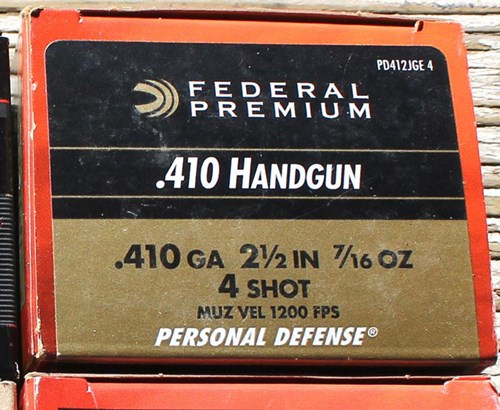
As one of the four loads that make up Federal Premium's .410 Handgun lineup, it's the only birdshot load I've found that is marketed as a defensive option. It's topped off with 7/16 oz. (191.4 gr.), or approximately 60 pellets, of copper-plated lead birdshot launching at a listed muzzle velocity of 950 f.p.s. Although the Magneto Speed chronograph captured velocity information for the other loads tested, it couldn’t read this one.
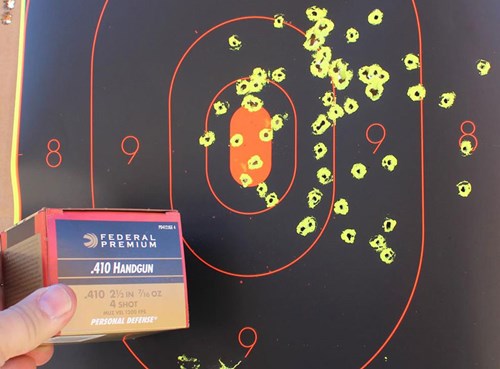
The 18.5” Persuader printed a 6.5" group with this load at seven yards with the 14” Shockwave spreading out to 7" at the same distance.
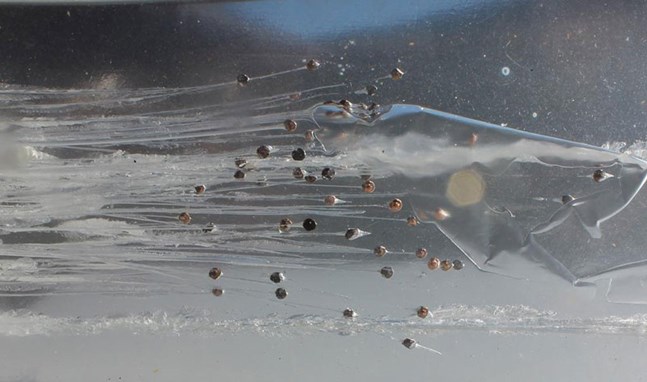
When the 60 #4 pellets were fired into gel, the shallowest pellet stopped at 4" into the block with the deepest penetrating to 8.5". The bulk of the pellets were lodged between 4.5" to 6.5," with all of the pellets maintaining their rounded shape.
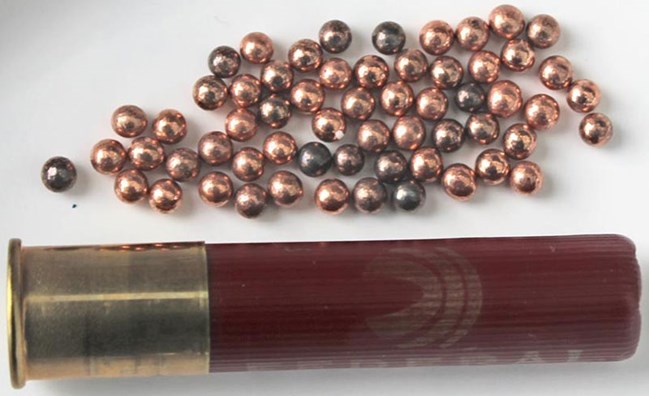
Don't forget, this load was fired into the gel at 10 feet. As distance increases the pellets will spread apart even more while rapidly losing energy. Will birdshot loads inflict pain at close range? Certainly. Are they potentially lethal? Absolutely! But .410 birdshot loads do not meet the 12" minimum penetration requirement. In the case of .410 platforms, hand-held or shoulder-mounted, all birdshot loads should be relegated to hunting and pest control. It is not an optimal choice for personal protection.
Federal Premium .410 Handgun 4-Pellet 000 Buckshot
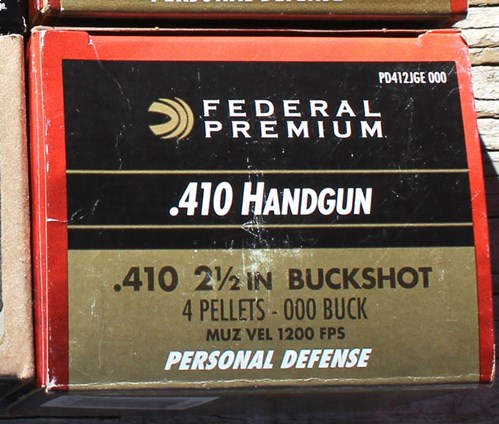
This is one of the best all-purpose .410 buckshot loads on the market. It fires a total of four 000 copper-plated lead buckshot pellets at a listed handgun velocity of 850 f.p.s. Each .36-caliber ball weighs in at 72.9 gr. This particular shell has reliably loaded, fired and ejected from every single .410 platform I've fired it from. The extended wad works to keep the pellets in close formation as they leave the barrel resulting in tight patterns.
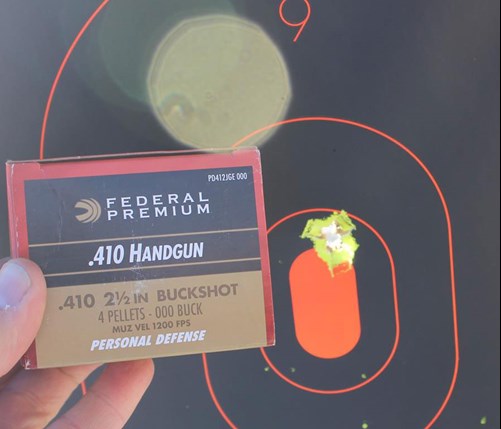
The Persuader produced a 0.5" pattern while the Shockwave opened up only slightly to just 1". The average muzzle velocity increased to 1064 f.p.s. when fired from the Persuader's 18.5" barrel.

The first round fired into the gel caused two pellets to exit upwards out of the blocks at 21.5" of depth, with the remaining two pellets located at 20" and 18". Because two pellets were lost, I fired a second round. One pellet exited upwards at 22.5", with one of the remaining three pellets stopping at 21" and the other two lodging in the block at 20.5". The recovered pellets only flattened out a bit, with some expanding to a .38-caliber diameter.
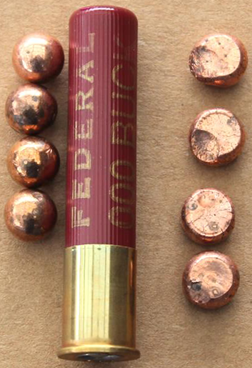
The average pellet depth for this buckshot shell was 20.7" with four .36 to .38-cailiber wound tracks per each shot fired. The only real difference in performance between this .410 load and some reduced-recoil 12-ga. buckshot loads (which usually contain 8 or 9 pellets) is the number of pellets fired.
Hornady Critical Defense Triple Threat
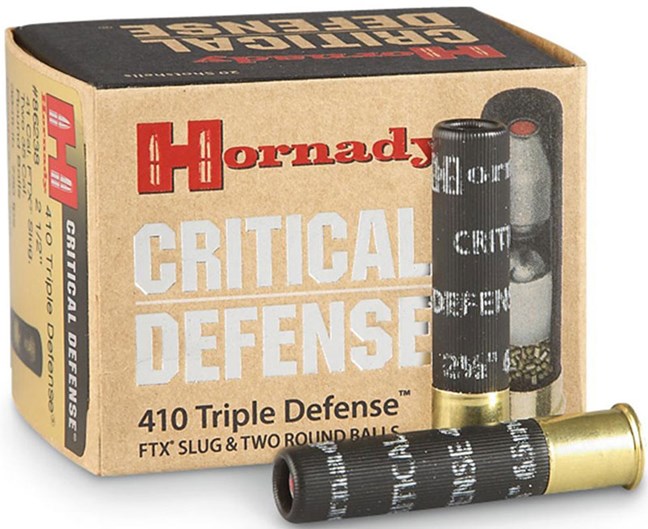
Rather than producing yet another buckshot load for defensive .410s, Hornady made the most of one of the company’s popular expanding bullet designs for the Critical Defense Triple Threat mixed-payload cartridge. It contains two .35-caliber, .65-gr. lead pellets topped with a .41-caliber 115-gr. FTX hollow-point lead slug for a total of 245 gr. of lead launching at a listed velocity of 750 f.p.s.
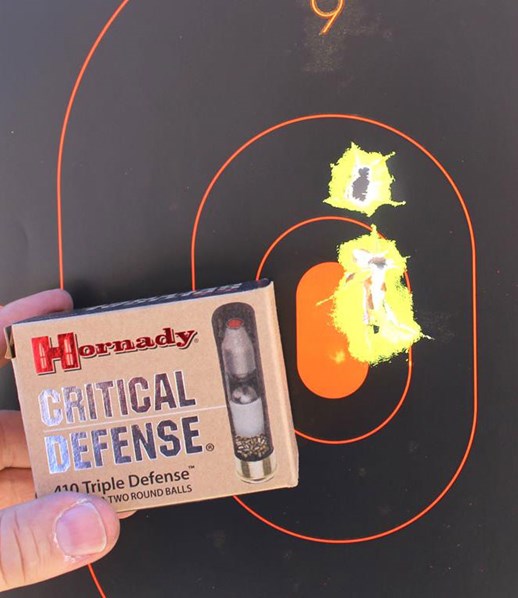
The three projectiles spread out to 2.5" when fired from the Persuader with an average muzzle velocity of 1116 f.p.s. The Shockwave posted a 1" cluster with this load.
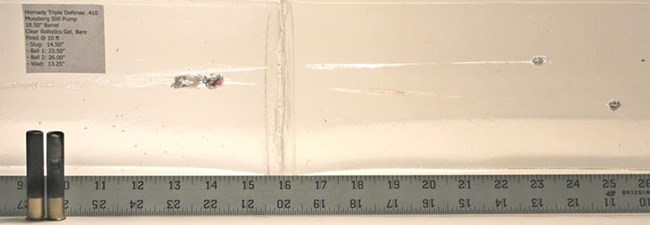
The gel results were interesting with this one. The .41-caliber FTX slug successfully expanded to .64-cal. with a penetration depth of 14.50". However, the slug took some damage as the two .35-cal. pellets pushed past it. They came to rest at 23.5" and 26". The polymer wad traveled 13.25" into the block, effectively making it a fourth projectile.
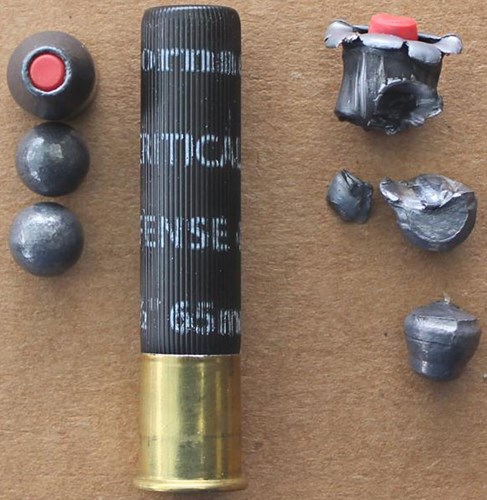
Winchester PDX1 Defender
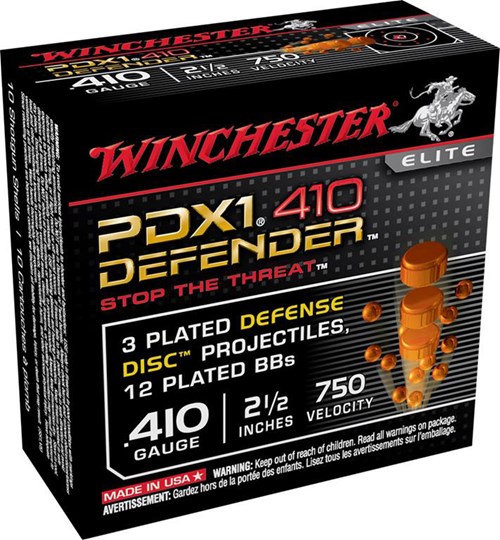
Winchester took the road less traveled when designing the mixed-payload PDX1 Defender. Rather than using rounded buckshot pellets, the shell is topped with three, pre-flattened .40-cal. copper-plated lead discs followed by 12 pieces of BB size copper-plated lead shot. The total payload weighs 11/16 oz. (310 gr.) with a listed velocity of 750 f.p.s.
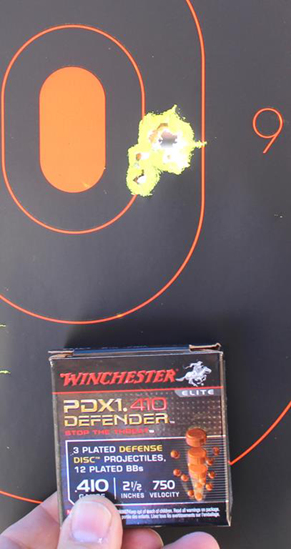
Velocity jumped up to an average of 1073 f.p.s. when fired from the Persuader with all of the projectiles staying close together to form a 1.5" group. When fired from the Shockwave, the three defense disks spread out to form a 1.25" group with the BB pellets forming a 3" pattern.
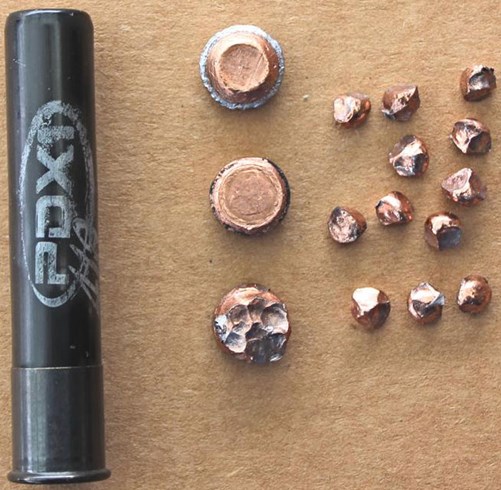
When fired into gel, the three disks stopped at 28.25", 27.75" and 25.75". The 12 BB pellets penetrated from 5" to 26.5", with five of the pellets stopping at around the 11" mark. Extracting the projectiles from the gel revealed that the top two disks were relatively unchanged while the third was pock marked by the BB shot. The BBs were deformed into odd shapes with angular and sometimes rough edges.
Remington Express Rifled Slug
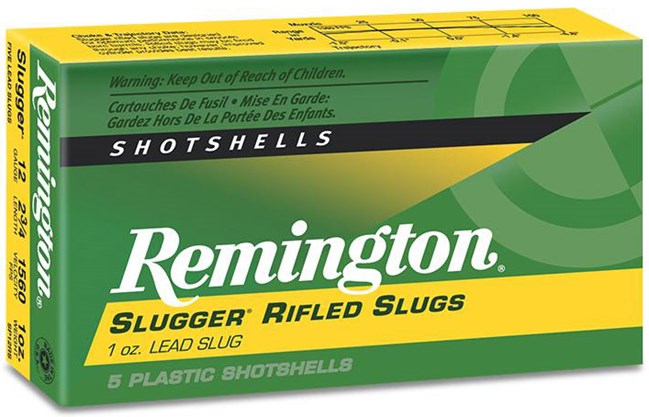
When it comes to 12-ga. shotguns, 1-oz. rifled slugs are highly prized for their spectacular results down range. So there was no way I could conduct a .410 shotgun test without throwing in at least one type of slug to round things out. The Remington Express .40-cal. 1/5 oz. (87.5-gr.) rifled slug is a good example of a typical .410 load in this category. The lightweight slug has a rounded nose and rifled sides to help stabilize it in the barrel. Because it's designed for use in longer-barreled sporting shotguns, it has a listed velocity of 1830 f.p.s.
I didn't spend much time patterning this round from either shotgun. Slugs at seven yards will easily print five-shot groups under an inch in size from a shoulder-stocked scattergun if the shooter is doing their job. Because the Persuader's 18.5” barrel is shorter than most sporting models (20”-26”), the velocity dropped to an average of 1752 f.p.s.
Quite frankly, I was surprised by the gel results. A rounded projectile of this weight and size traveling at 1752 f.p.s. is striking the gel with 596 ft.-lbs. of energy. It seemed like it would punch deeply into the gel. However, I didn't take into account the fact that this type of slug is hollow with relatively thin walls.
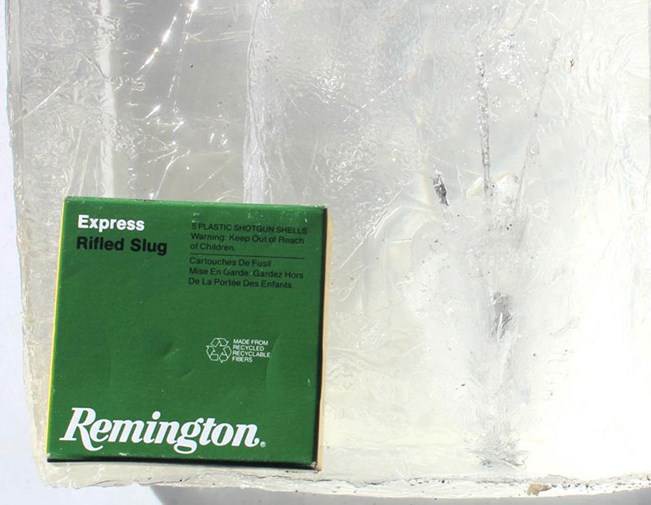
The first slug I fired fragmented on impact with lead pieces penetrating to distances ranging from 2.5" to 4". Just to make sure these results were not a fluke, I fired a second slug but got the same result. The extracted lead from the first slug shows how the slug broke apart into irregular pieces.
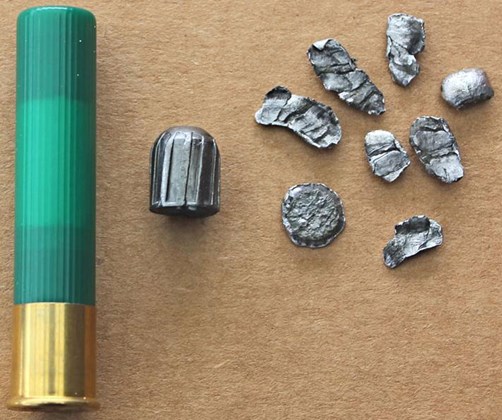
Like birdshot loads, this type of slug should be reserved for hunting applications since it does not produce enough penetration to be an effective defensive option. Perhaps a solid slug design would fare better, but I don't have the data to back that up at this point in time. Although this particular load is not the best fit for home defense, Remington does offer two top-notch 000 buckshot .410 loads as part of their Ultimate Defense line.
Wrapping Up
The general rule of thumb with concealed-carry handguns is to pack the largest caliber you can comfortably keep on target and practice with regularly. The same rule can be applied to defensive shotguns. If you can handle a 12 gauge or a 20 gauge, then go with the larger option. They launch a good deal more lead than a .410 bore.
However, it’s a mistake to dismiss .410 shotguns as defensive options out of hand, especially when the more recently developed defensive loads are taken into consideration. Based on results, properly loaded .410s can neatly split the difference between defensive 12-ga. shotguns and medium-caliber handguns at close range. They produce significantly less recoil than larger shotguns while launching multiple .36- to .40-cal. projectiles with penetration potential that exceeds FBI standards. If a .410 is what you’ve got, or the most you can handle, then go with these improved defensive loads.
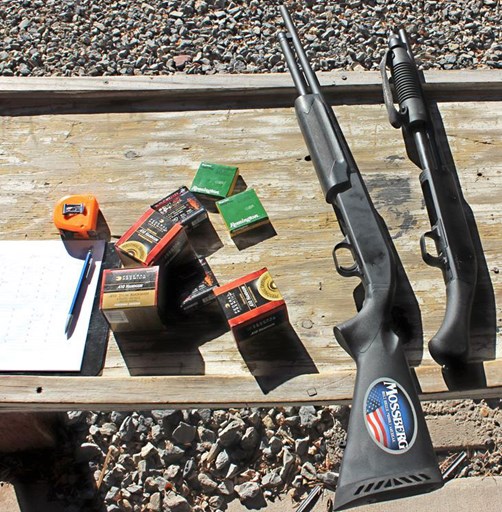
Specifications:
Defensive .410 Shotshell Manufacturers:
Federal Premium
Hornady
Remington
Winchester
Shotgun Manufacturer: O.F. Mossberg & Sons
Model: 500 Tactical "Persuader" (#50454)
Action: Pump Action
Caliber: .410 Bore, 2 1/2” and 3” Shells
Barrel: Matte-Blue Steel
Magazine: Tubular
Receiver: Hard-Anodized Aluminum
Trigger: Smooth-faced steel bow
Trigger Guard: Black Polymer
Safety: Tang-Mounted Slider
Fore-end: Black Polymer
Shoulder Stock: Black Polymer with Vented Recoil Pad
Length of Pull: 12.75"
Sight: Brass Bead
Barrel Length: 18.5" smooth bore
Choke: Cylinder Bore
Overall Length: 37"
Trigger Pull: 4 lbs. 13 oz. (as tested)
Weight: 5 lbs. 8 ozs. Unloaded
Capacity: 2.5” Shells = 5+1, 3" Shells = 4+1
Accessories: Lock, Owner's Manual
MSRP: $466
Model: 590 Shockwave (#50649)
Action: Pump Action
Caliber: .410 Bore, 2 1/2” and 3” Shells
Barrel: Matte-Blue Steel, Heavy-Walled
Magazine: Tubular
Receiver: Hard-Anodized Aluminum
Trigger: Smooth-faced steel bow
Trigger Guard: Black Polymer
Safety: Tang-Mounted Slider
Fore-end: Shockwave Technologies Raptor Strap Kit, Ribbed Black Polymer
Grip: Shockwave Technologies Raptor Bird’s Head, Smooth Black Polymer
Sight: Brass Bead
Barrel Length: 14" Smooth Bore
Choke: Cylinder Bore
Overall Length: 26.37"
Trigger Pull: 5 lbs. 10 oz. (as tested)
Weight: 4 lbs. 4 ozs. Unloaded
Capacity: 2.5" Shells = 5+1, 3" Shells = 4+1,
Accessories: Lock, Owner's Manual
MSRP: $455













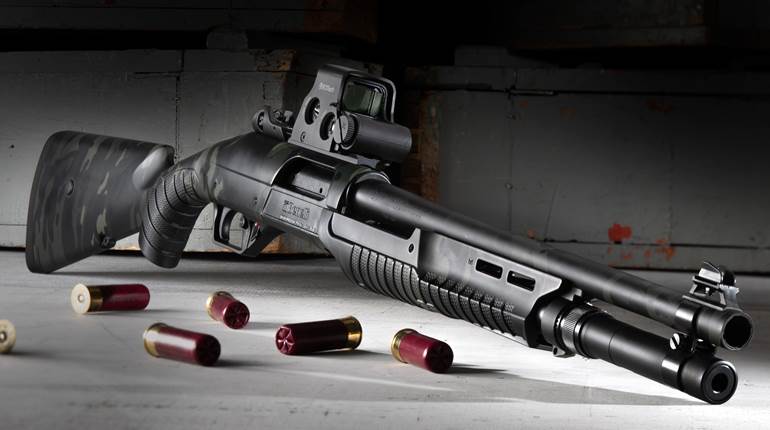
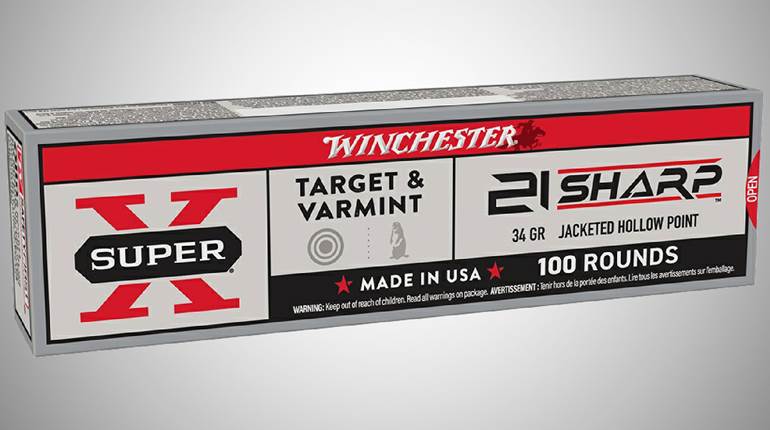
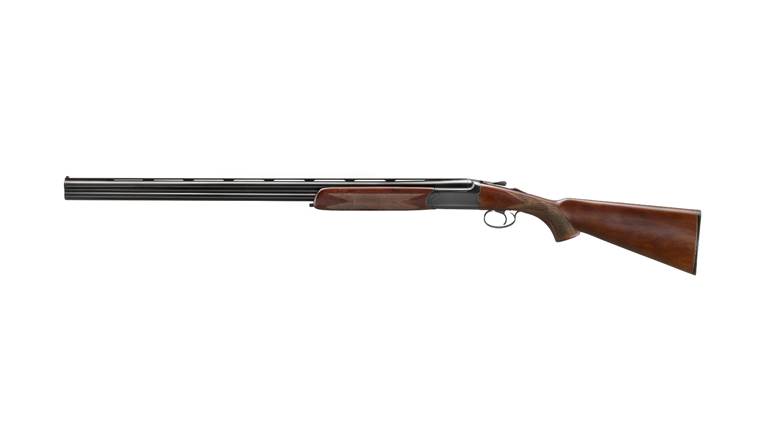

![Winchester Comm[94]](/media/1mleusmd/winchester-comm-94.jpg?anchor=center&mode=crop&width=770&height=430&rnd=134090756537800000&quality=60)
![Winchester Comm[94]](/media/1mleusmd/winchester-comm-94.jpg?anchor=center&mode=crop&width=150&height=150&rnd=134090756537800000&quality=60)

